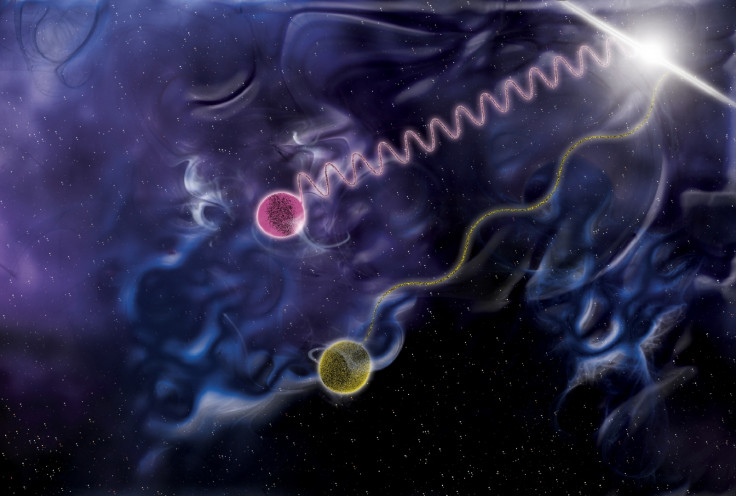Physicists have just created an entirely new form of light
New findings could herald revolution in the power of quantum computers.

Light, as we understand it, is made up of countless tiny particles known as photons. However, unlike other types of matter, these particles do not interact with one another. This explains why nothing happens when two light beams cross each other.
But, in seeming contradiction of the laws of physics, researchers from institutions including MIT and Harvard University, have essentially created a new form of light in which photons interact and stick together. The findings, published in the journal Science, could herald a revolution in quantum computing.
"The interaction of individual photons has been a very long dream for decades," said Vladan Vuletic, a professor of phsyics at MIT.
For their experiments, researchers shone an extremely weak laser beam – so weak in, fact that it consisted of just a handful of photons - through a dense cloud of extremely cold rubidium atoms. These atoms had been cooled to just a millionth of a degree above absolute zero – essentially bringing them to a standstill, due to their lack of energy.
They then measured the photons as they came out of the other side of the atom cloud, finding that instead of exiting one by one, as would be expected, they streamed out as pairs and triplets which were bound together.
Normally, photons have no mass and travel at the speed of light (300,000 kilometres per second), but in their experiments, the scientists found that the bound photons gained a small amount of mass – about as much as an electron.
These slightly heavier particles also moved more sluggishly, travelling around 100,000 times slower than normal protons.
The results prove for the first time that photons of light can indeed attract - or entangle - one another. The researchers say that if they can be made to interact in other ways, they could be harnessed to perform extremely fast and incredibly complex calculations inside quantum computers. This new technology has the potential to solve problems that even the most powerful traditional computers are incapable of.
"Photons can travel very fast over long distances, and people have been using light to transmit information, such as in optical fibers," Vuletic said. "If photons can influence one another, then if you can entangle these photons, and we've done that, you can use them to distribute quantum information in an interesting and useful way."





















